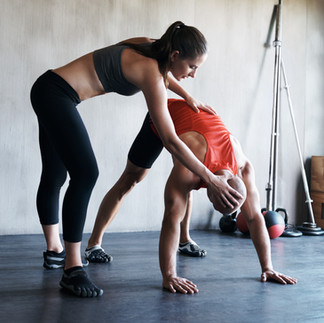You got to move it, move it!
- DrSean
- Jun 7, 2021
- 2 min read
Mobility is defined as the ability to move freely and easily. In our body, every time bones come together that creates a joint, and almost all of our joints are designed to move. Joints that have free and easy movement have good mobility. It is something that we can lose over time, usually because we stop moving as much. It could be for a variety of reasons, maybe an injury caused you to stop moving through a joint or maybe you are stationary at work. Regardless of why it is important for our health that we keep our mobility and we continually work on maintaining it. Probably hear it all the time, but "if you don't use it, you lose it."

Passive vs Active Range of Motion
Passive mobility is when someone or something helps to challenge your range of motion. Some good examples would be getting adjusted, having someone help you stretch out, or using a doorway stretch. Active mobility is when you challenge your range of motion. A good example of this is yoga or doing range of motion exercises. It is important to have both so we can put good stress through our bodies and joints. Bodies adapt to stress, so make sure it's good stress.
End Range
End range is the full extent of our body's motion. Everyone has a different end range which has to do with many factors, including how active you are and genetics. If you have better mobility, your end range will be further, and people will say, "wow, you're flexible!" If you don't have as much mobility, you will hear, "oh, you're stiff." Your mobility will be improved with consistent work and practice. It is important to get to your end range safely and without pain to get better results.
Why end range?
Loading into your end range will stimulate the mechanoreceptors (a type of sensory neuron that gives feedback to your brain a mechanical/pressure stimulus) in your joints. If you safely challenge the end range, your mobility will improve.










Comments